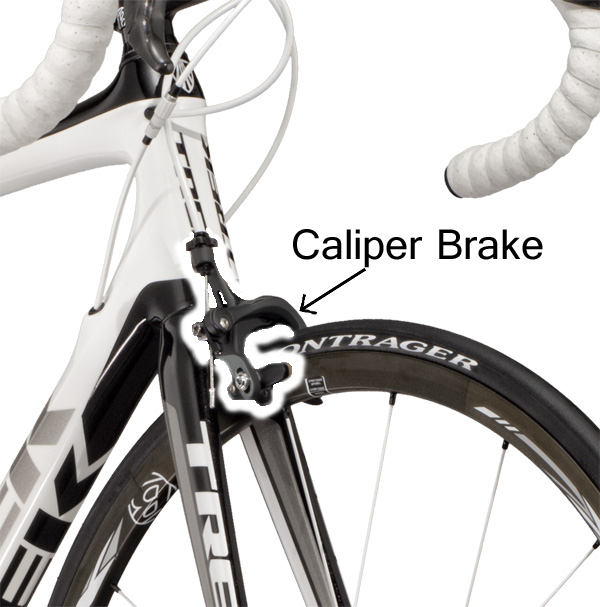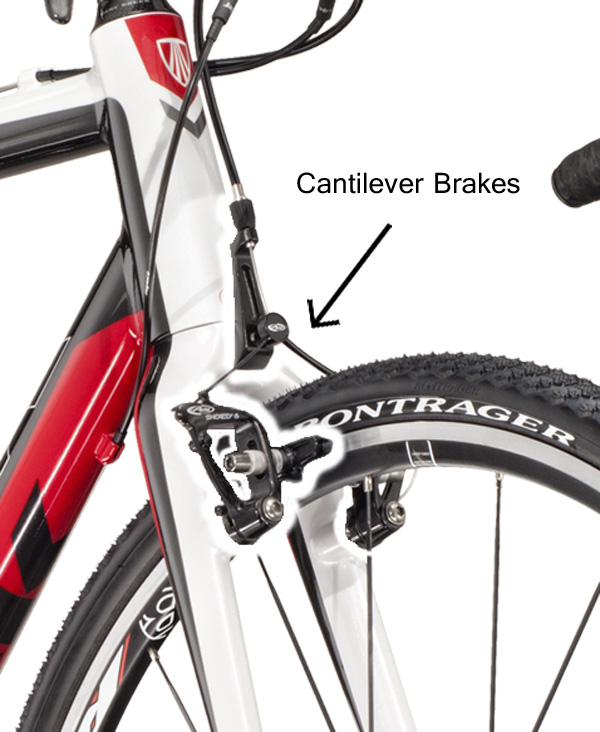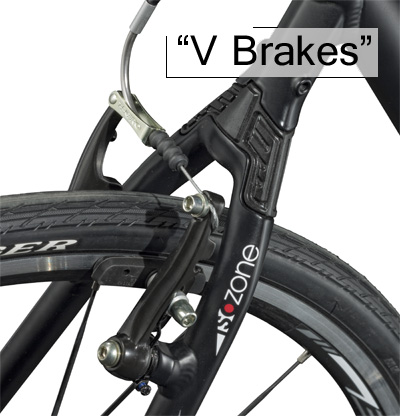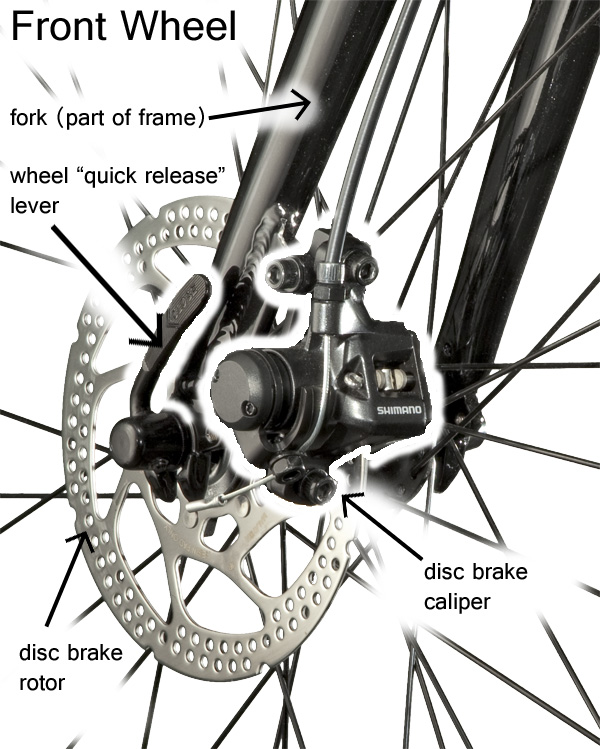Basic Bicycle Anatomy 101 - Brake Systems
There are many different types of brakes. However, we are only going to cover the 4 most common. Below each type shown here we will describe the very basic pros, cons, and uses for each type of brake.

Caliper Brake
The caliper brake is probably the MOST common type of brake on bicycles. It is strong, sleek, dependable and simple. It is a rim brake since the way it works is by clamping down on the metal rim. It is the standard on almost all road bikes and most youth bikes.
![]()

Cantilever Brakes
Cantilever brakes are far more powerful than caliper brakes. Although a little less aero-dynamic. These are most commonly used on "cyclo-cross" bikes. These bikes are either set up for or designed for cyclo-cross racing which is where one uses a road style bike to race across light-off-road terrain. Cyclo-cross bikes have a great need for a more powerful brake than what standard caliper brakes can provide. A special fork is required to mount these brakes to a road-style bicycle.
![]()

V-Brakes
V Brakes are the most common term for this style of brake. Shimano actually named these and other brake companies label them "linear-pull" or "direct-pull" brakes. These brakes are extremely powerful. They are most common on mountain and off-road bikes. They have the power to slow and stop a wet or even muddy wheel making them ideal for off-road use. They are a little heavier than either Cantilever or Caliper brakes. These brakes are a "rim brake" style of brake and they require frame/fork mounts to be attached to a bike.
![]()

Disc Brakes
Disc brakes are more powerful than V-brakes and require less hand strength to operate. They are heavier though. They are not a "rim-brake" as they do not clamp the rim but rather to a hub-fixed "rotor". Disc brakes require a compatible hub, wheel rim, and frame/fork. Disc brakes come in two different styles, Hydraulic or Mechanical cable-pull (mechanical cable-pull shown in diagram above) These brakes are great for fast descents on off-road trails. They can handle high heat without damaging the tire by heating up the rim as "rim-brakes" do. We are talking about descents like 65 mile per hour for 20 minutes straight with many turns. Disc brakes are completely immune to trail debris, water, and mud. If a rider runs through a creek deep enough to get the rotor wet/muddy the hard pads will sheer the water and mud off the rotor immediately with their phenomenal strength and pressure. All rim brakes with their rubber pads have a tendency to harbor dust, sand, or mud in the (comparatively) softer rubber pads making their performance somewhat delayed in a high speed situation. Simply put, Disc brakes are stronger, more dependable in dirty environments, and are immune to heat (from friction caused by use).
![]()
Quick links to specific bicycle sections & parts:
Frame Terminology>>
Bicycle Front End>>
Bicycle Center>>
Bicycle Back End>>
Shocks>>
Brakes>>
Pedals & Shoes>>
